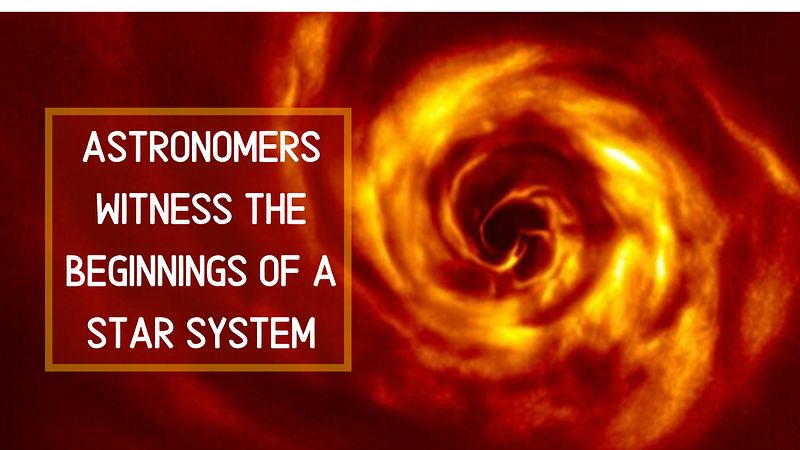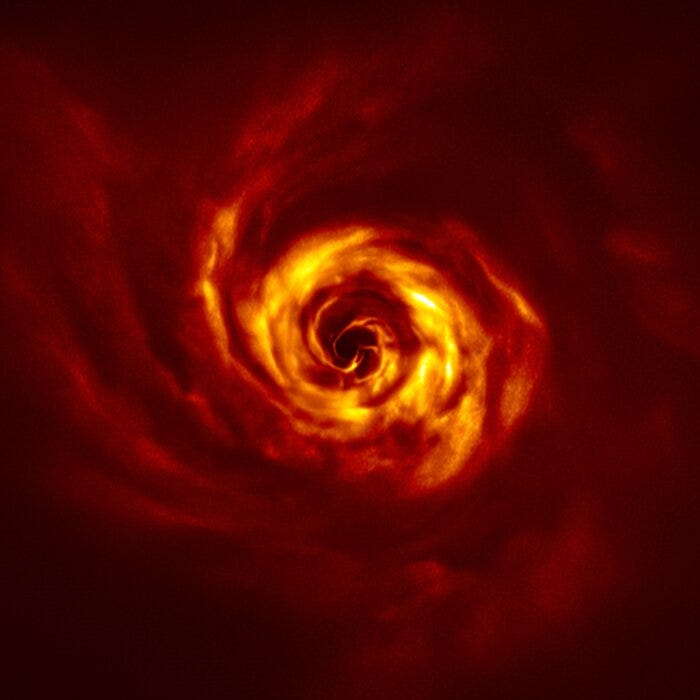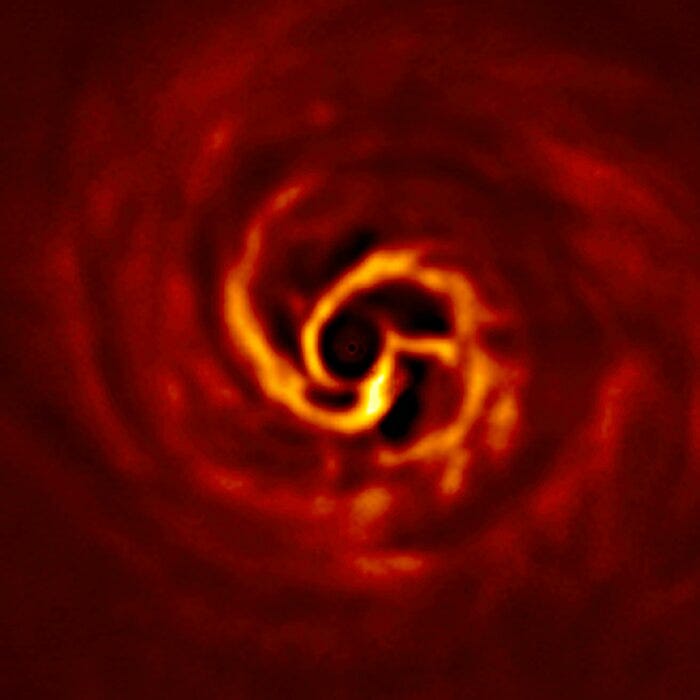Astronomers Capture the Birth of a Planetary System
Written on
Chapter 1: Unveiling the Spiral of Planet Formation
Recent observations by astronomers using the European Southern Observatory's Very Large Telescope (VLT) have revealed a remarkable spiral formation surrounding a young star, AB Aurigae, located 520 light-years away. This spiral structure provides the first visual evidence of a potential planet forming within a protoplanetary disc, shedding light on the origins of planetary systems.
This paragraph will result in an indented block of text, typically used for quoting other text.
Section 1.1: A Significant Discovery
The findings, published in the journal Astronomy & Astrophysics, indicate that the spiral structure is a key marker of planet formation. According to Anthony Boccaletti, the study's lead researcher from the Observatoire de Paris, “While thousands of exoplanets have been detected, the process of their formation remains largely elusive. We must observe very young systems to capture the formation moment.”

Despite the understanding that planets are formed within dust and gas discs surrounding young stars, capturing clear images of this process has remained a challenge for astronomers. This research is poised to enhance our understanding of how planets come into existence.
Section 1.2: Advanced Imaging Techniques
Utilizing the Spectro-Polarimetric High-contrast Exoplanet REsearch (SPHERE) instrument, the team produced a stunning image of the AB Aurigae system. SPHERE is designed specifically to capture direct images of exoplanets and their environments, employing advanced technologies such as extreme adaptive optics to achieve high contrast.

The image reveals a distinct 'twist' in bright yellow at the center of the disc, indicating a region where a planet is believed to be forming. This twist is comparable in distance from AB Aurigae to that of Neptune from the Sun.
Chapter 2: Understanding Planet Formation Dynamics
As protoplanets orbit their central star, they generate waves that manifest as spiral arms within the disc. The bright yellow 'twist' observed in the AB Aurigae images is a critical marker of this phenomenon. Boccaletti notes, “While many spirals are visible, the inner twist is particularly significant.”
The first video titled "We Just Witnessed a Star Swallowing a Planet For the First Time" provides further insights into the dynamics of star and planet interactions, illustrating the complexities of celestial formations.

The inner spiral, characterized by this twist, may reveal the connection between the spiral's formation and the presence of a planet, suggesting that the spiral is produced by the planet's gravitational influence as it interacts with surrounding gas.
In the second video, "James Webb Space Telescope Just Detected Planet With City Lights 7 Trillions Miles From Earth!", viewers can explore the advancements in astronomical observations and the potential for discovering new worlds.
The research team continues to monitor AB Aurigae, aiming to determine if the observed twist rotates in accordance with Kepler's laws, a definitive indicator of planetary presence. They also plan to investigate the accretion process, which is crucial for understanding how protoplanets gather mass.
With the upcoming Extremely Large Telescope, astronomers hope to gain even deeper insights into this fascinating process, potentially analyzing the dynamics of gas as it forms planetary atmospheres.
Special thanks to Anthony Boccaletti for his contributions to this groundbreaking research.
Original research: Boccaletti. A, Di Folco. E, Dutrey. A, et al, ‘Are we witnessing ongoing planet formation in AB Aurigae*: A showcase of the SPHERE/ALMA synergy,’ Astronomy & Astrophysics, [2020].